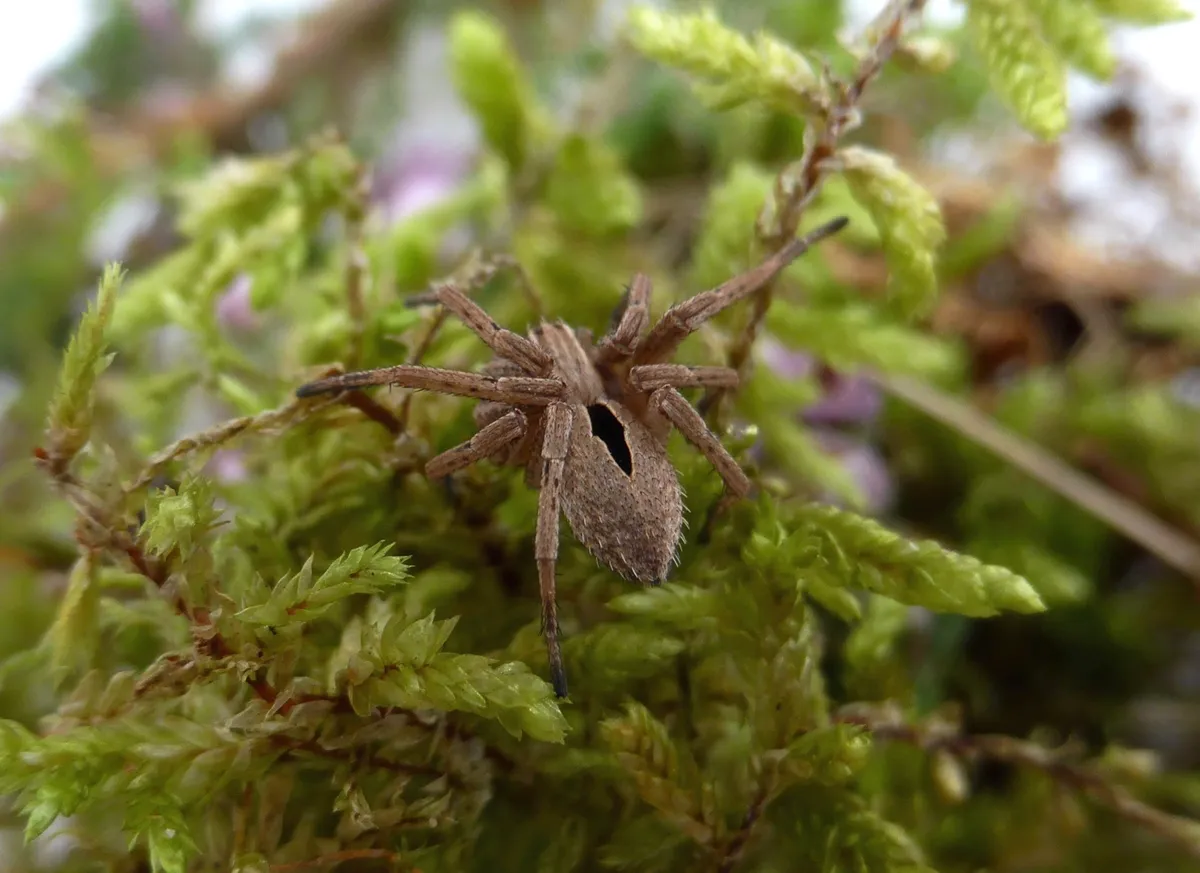Until the discovery in the heathland of Clumber Park in Nottinghamshire, there were just three recorded sightings of the species in the UK, with the most recent dating back almost half a century.
The first recorded sighting of the diamond spider was made at the end of the 19th century at Brokenhurst in the New Forest. It was more recently seen in 1969 at Legsheath and Duddleswell in Ashdown Forest, Hampshire.
“The spider ran away from me twice but with persistence and some luck I caught it; at the time I had no idea that it would turn out to be such a rare find,” said Lucy Stockton, who made the surprise discovery while looking for arachnids in Clumber Park's heathland.
“Upon closer inspection our spider had a conspicuous ‘cardiac mark’, a black diamond shape on its abdomen, edged with white that helped us to identify it. We were thrilled to have discovered this new resident of Clumber Park and to prove that this species is definitely not extinct in the UK.”
The spider’s identify was confirmed by experts from the national Spider Recording Scheme.

The National Trust’s Specialist on Nature Matthew Oates, said: “This remarkable discovery shows that diligent amateurs can strike gold here in the UK by surveying the less well studied elements of our flora and fauna. In this era of species decline, climate change and arrival of new species, the nation needs a vast new army of naturalists, to discover and monitor what’s going on, and so inform our decision makers.”
The National Trust is aiming to rebuild areas of heathland at Clumber Park with an £8.5 million restoration project. The programme could help the diamond spider, which resides in heather, purple moor grass and damp areas of moss.
“We are absolutely delighted that this pretty little spider has been re-found – we had almost given up hope. It is a testament to the crucial importance of charities like the National Trust saving and managing heathland habitats,” said Chief Executive of Buglife Matt Shardlow.
Dr Helen Smith, Conservation Officer at the British Arachnological Society, added: “This species is classified as ‘Critically Endangered’, and it was thought possible that it had become extinct in Britain – its conservation at Clumber is now a very high priority. The discovery highlights both the importance of the Clumber heathlands and the invaluable contribution made by volunteers in recording spiders and providing the information needed to help conserve our rarest species.”

